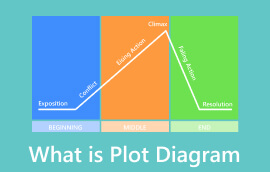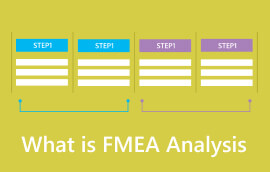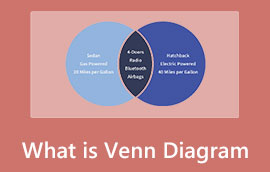Uncovering Gap Analysis Definition, Tools, & Process
If you’re in the world of business, you only think of one thing, and that’s to grow. And so, you make plans and strategies to bring it to the next level. Yet, making business goals could be challenging if you don’t know where to start. Now, that’s where gap analysis comes in. A gap analysis will bridge your current business performance to your desired goals. In simple terms, you’re looking for what’s missing to achieve your goals and plans. Here, understand the gap analysis meaning and learn how to create your own analysis.

- Part 1. What is Gap Analysis
- Part 2. Gap Analysis Tools
- Part 3. How to Do Gap Analysis
- Part 4. FAQs About What is Gap Analysis
Part 1. What is Gap Analysis
Gap analysis is also called a needs analysis. It is a method that assesses the business's current performance with the expected one. Companies use this to determine if they’re meeting their goals and using the resources best. The word ‘gap’ represents the difference between your current status and future goals. Gap analysis provides a structured framework to pinpoint where you are and where you want to be. Also, identify what steps are needed to bridge that gap. Gap analysis is essential to any type of organizational performance. By this, companies can reevaluate their goals to find out whether they’re achieving them.
Back in the 1980s, people used gap analysis along with duration analysis. Gap analysis is a bit more complicated and not as commonly used as duration analysis. Yet, it can still help to know how vulnerable you are to changes in interest rates and other financial stuff.
Part 2. Gap Analysis Tools
There are several tools available for carrying out a gap analysis. Now, let's explore five useful tools employed for conducting gap analysis:
1. SWOT Analysis
SWOT means Strengths, Weaknesses, Opportunities, and Threats. It's a tool that helps you understand your current position by identifying the internal and external elements. You’ll get to know what you're good at (strengths) and where you need improvement (weaknesses). Also, what's potentially advantageous (opportunities) and what might pose challenges (threats). SWOT analysis gives you a broad view of your situation, making it easier to set goals and strategies.
2. Benchmarking
Benchmarking is another gap analysis tool. It involves comparing your performance to that of other similar organizations' standards. It helps you see where you stand in relation to your competitors or peers. By studying what others are doing well, you can learn how to improve and reach your goals more effectively.
3. Mind Mapping
Mind mapping is a visual tool that lets you organize your thoughts and ideas in a structured way. It's like creating a diagram where you put your current state. Then, in the center and then branch out with related aspects, goals, and actions. This can help you see connections, gaps, and opportunities more clearly.
4. PERT Technique
PERT represents program evaluation and review techniques. It serves as a project management instrument employed to assess the tasks on a schedule. It also helps you to figure out how much time it'll take to complete a project. Organizations use this tool to organize the tasks in a project. At the same time, establish a timetable that promotes effective task coordination execution.
5. Fishbone Diagram
The fishbone diagram is another gap analysis tool that can help you. It lets you explore the causes behind a specific issue or gap. Imagine drawing a fishbone-shaped diagram with the issue at the “head” of the fish and “bones” branching out to represent possible causes. By visually mapping out the causes, you can see what factors might be contributing to the gap. Thus making it easier to address the root issues.
6. Nadler-Tushman Model
The Nadler-Tushman model is often seen as the most dynamic one. It takes a close look at how one business process influences another and identifies the gaps that can slow down effectiveness. It offers a comprehensive perspective on your organization's operational procedures. It covers everything from where it all starts (input) to where it ends (output).
7. McKinsey 7S Model
The McKinsey 7s model is another tool that checks seven important things inside a business. The McKinsey consulting firm created it. The 7S framework serves to see if a company is living up to its goals. Furthermore, this model connects the present and future status.
Part 3. How to Do Gap Analysis
If you’re wondering how to do a gap analysis, there are 4 simple steps you can follow. No matter what your company or industry is, you can use these steps to conduct a gap analysis.
Step #1. Determine Your Current State
Begin by assessing and thoroughly understanding your current business status. Collect data and evaluate your resources. Finally, examine your existing processes to establish a clear picture of what your situation is. Here, you need to list all the contributing variables in your business problem.
Step #2. Define Your Desired State
Specify your desired outcome or where you want to be in the future. Your desired state should be concrete and achievable. In that way, it will serve as a clear target to aim for. Also, in this step, you have endless possibilities. So, dream high on your desired state in the future.
Step #3. Identify the Gaps
Step #4. Develop an Action Plan
Once you've identified the gaps, create a detailed action plan. It should outline the specific steps required to bridge these differences. This plan should be practical and achievable. So, it may assist your efforts toward closing the gaps and reaching your desired state.
Now that you know how to do a gap analysis, here’s a diagram for your reference.

Having a gap analysis diagram helps you better understand it, right? It wouldn’t be possible without the assistance of the best diagram maker— the MindOnMap. It stands as one of the top choices for conducting gap analysis.
MindOnMap is an online diagram maker that you can access on various popular browsers. It also offers an app version that you can download on your Windows or Mac personal computer. Its intuitive interface allows you to create a diagram of your choice with ease. Further, MindOnMap provides several editing diagram options. With it, you can add text, shapes, lines, color fills, and more. Apart from gap analysis diagrams, it offers other diagram options and templates. It includes a treemap, organizational chart, fishbone diagram, and so on.
Its notable features include collaborative capabilities. It enables you to work together with teams in real time. It also can integrate various data sources, making it a versatile solution for businesses. It ensures you can bridge the gap between where you are and where you want to be.
Start by visiting the official website of MindOnMap. On the main page, choose between Free Download or Create Online. Select the one you prefer.
Secure Download
Secure Download
In the New section, select the option Flowchart. To create your desired gap analysis, the flowchart is the best way to do it.

Now, start customizing your gap analysis based on your preferences. Add all the details you need in your diagram.

To collaborate with your team, click the Share button in the upper-right-hand corner. Then, set the Valid Period and Password for security. Finally, hit the Copy Link button.

Once you or your team are satisfied, you may now save your work. To execute this, click the Export button and pick your desired output format. Wait until the exporting process is finished, and you’re done!

Further Reading
Part 4. FAQs About What is Gap Analysis
What is gap analysis in healthcare?
In healthcare, gap analysis involves evaluating the current services provided and the desired level of care. It helps identify where healthcare can improve to meet patient needs and regulatory requirements.
What is a gap analysis in business?
In business, gap analysis is the process of comparing current performance or processes with desired goals. It reveals where a company falls short and what steps are needed to bridge the gap.
What is gap analysis in education?
In education, gap analysis assesses the student's current knowledge and the expected level of proficiency. It helps educators determine where students need additional support. Or where curriculum adjustments are required to improve learning outcomes.
Conclusion
In the end, you have learned the definition and different tools of gap analysis. Also, you now know how important this type of analysis is. It could be in business, education, healthcare and more. What’s more, you have also discovered the best tool to make a gap analysis, which is MindOnMap. The platform has more to offer for you and its users. Whether you’re a professional or a beginner, you can enjoy using it with its straightforward user interface.










